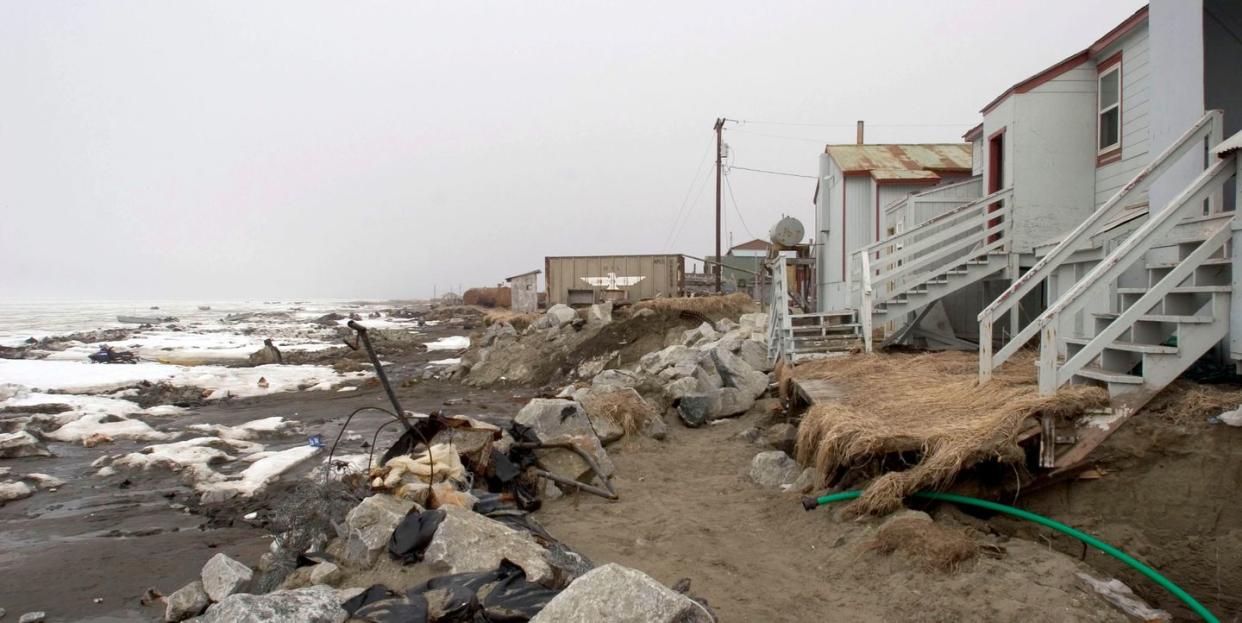The Climate Crisis Is Not Evenly Distributed, But It's Already Here

Chris Mooney and a team of reporters and analysts at The Washington Post have produced the most important piece of climate journalism that we've seen in a very long time. It is a detailed account of how the most extreme consequences of the climate crisis are already here in the United States, and where they at this moment are having the most serious impact. (Also, for the benefit of uninformed dunces like myself, there's an even a one-click feature that converts temperatures from Celsius to Fahrenheit.) Needless to say, the information is an insanely detailed accounting of how thoroughly fcked we already are.
New Jersey may seem an unlikely place to measure climate change, but it is one of the fastest-warming states in the nation. Its average temperature has climbed by close to 2 degrees Celsius since 1895 — double the average for the Lower 48 states...The potential consequences are daunting. The United Nations Intergovernmental Panel on Climate Change warns that if Earth heats up by an average of 2 degrees Celsius, virtually all the world’s coral reefs will die; retreating ice sheets in Greenland and Antarctica could unleash massive sea level rise; and summertime Arctic sea ice, a shield against further warming, would begin to disappear.
Well, that sounds bad. But the effects of the climate crisis are not evenly distributed—this gives some blank ammunition to the denialist side—and the most seriously affected places can come as something of a surprise, at least to anyone who doesn't live there.
Alaska is the fastest-warming state in the country, but Rhode Island is the first state in the Lower 48 whose average temperature rise has eclipsed 2 degrees Celsius. Other parts of the Northeast — New Jersey, Connecticut, Maine and Massachusetts — trail close behind. While many people associate global warming with summer’s melting glaciers, forest fires and disastrous flooding, it is higher winter temperatures that have made New Jersey and nearby Rhode Island the fastest warming of the Lower 48 states.

The handy map provided by the team gives you a vivid illustration of where the hot-spots are, from northern Michigan to the Arizona desert. The Acela corridor from Boston to Washington is conspicuously displayed.
Scientists do not completely understand the Northeast hot spot. But fading winters and very warm water offshore are the most likely culprits, experts say. That’s because climate change is a cycle that feeds on itself. Warmer winters mean less ice and snow cover. Normally, ice and snow reflect solar radiation back into space, keeping the planet relatively cool. But as the ice and snow retreat, the ground absorbs the solar radiation and warms. NOAA data shows that in every Northeast state except Pennsylvania, the temperatures of the winter months of December through February have risen by 2 degrees Celsius since 1895-1896. And U.S. Geological Survey data shows that ice breaks up in New England lakes nine to 16 days earlier than in the 19th century.
There's also a deep dive into the immediate effects of the crisis. Beaches are disappearing in Rhode Island. Adios, property values and local small business.
Some residents want the beach’s owners to fight off the sea, Loura said. “They think they should build a sea wall, they should bring in tons of sand,” he said. “Last year, they spent a lot of money on sand. Guess what? It’s all gone.” Thoresen’s family is moving a convenience store and office for the second time in a decade — this time all the way back to the 18th row. “We moved it back 100 feet, and it only bought us 10 years,” Thoresen said. “That’s crazy.”

And the ripple effects of a warmer planet shake entire ecosystems. There's a lake in New Jersey that used to freeze in the fall so thickly that it supplied ice to New York City. Now, it doesn't freeze until January, and its warmer water has resulted in an algae bloom that's made swimming in the lake impossible. And there are also the beetles.
The ⅛-inch-long southern pine beetle had been largely confined to southern U.S. forests — hence its name. But the warmer temperatures have spurred the beetle’s migration north, where it has damaged more than 20,000 acres of the state’s Pine Barrens, a vast coastal forested plain that Congress has defined as a national reserve. "They are changing the Pinelands," says Matthew Ayres, a Dartmouth researcher who has studied the beetle. "It may not be too long before people are driving through the Pinelands saying, 'Why do they call it the Pinelands?'"
Actually, they may be boating through there, but the point remains. The crisis is here, now.
Respond to this post on the Esquire Politics Facebook page here.
You Might Also Like

